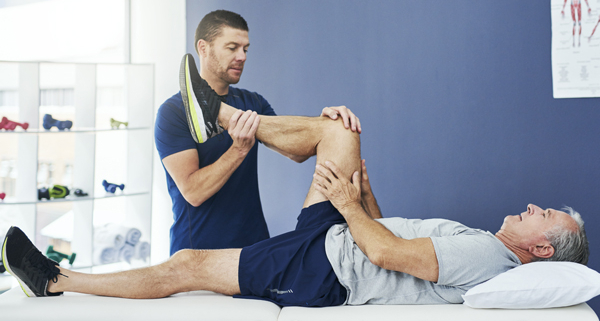
Post-Injury Rehabilitation
Overview
Post-Injury Rehabilitation is a critical and well-planned approach used to aid in the recovery process after an injury. The goal is to minimize one’s recovery time, help regain maximum functionality, and prevent re-injury. The whole process is targeted on the body’s healing response – how different body parts interact and respond to different types of injuries. Research shows that billions of people across the globe seek post-injury rehabilitation each year to heal from accidents, sports injuries, falls, and surgical operations.
Types
Post-injury rehabilitation can be broadly categorized into three types, depending on the injury sustained:
-
- Orthopedic Rehabilitation: Geared toward diagnoses like fractures, sprains, and tears in the ligaments.
-
- Neurological Rehabilitation: Specifically targets restoration of functions after a nerve or brain injury, such as stroke, spinal cord injury, or traumatic brain injury.
-
- Cardiac Rehabilitation: Aimed at patients recovering from heart attacks, heart surgery, or other cardiac conditions.
Causes
Injury can be caused by several factors such as:
-
- Trauma from accidents
-
- Sports and physical activities
-
- Repetitive motion or overuse of a particular body part
-
- Falls in older adults
-
- Underlying medical conditions, such as arthritis or osteoporosis
Symptoms
Symptoms vary widely depending on the nature and severity of the injury, some common ones include:
-
- Pain and discomfort
-
- Limited movement or reduced range of motion
-
- Swelling or bruising
-
- Abnormal bend or deformity of a limb
-
- Weakness or inability to bear weight
Diagnosis
A proper diagnosis of an injury typically involves steps such as a medical history review, a physical examination, and diagnostic tests such as X-rays, MRI, or ultrasound for a more accurate view of the injury.
Treatment Options
There is a wide range of treatments available for post-injury rehabilitation, spanning from conservative to surgical methods. The best approach depends on the type and severity of the injury. Options may include:
-
- Physiotherapy
-
- Pain management (over-the-counter or prescription medication)
-
- Occupational therapy to regain daily skills
-
- Surgery (in severe cases)
Living With Post-Injury Rehabilitation
Living with a serious injury can be physically and mentally challenging. However, some strategies can make the process of recovery smoother:
-
- Follow all prescribed treatments and therapies religiously
-
- Take prescribed medications on time and as directed
-
- Engage in gentle exercises (under physiotherapist recommendation) to improve flexibility
-
- Eat a balanced diet for proper nutrition to speed up the healing process
When to Seek Help
While minor injuries heal with time, some cases require immediate medical attention:
-
- Severe pain that is not relieved by over-the-counter medication
-
- If the injured area appears deformed or bent at an unusual angle
-
- Difficulty moving the injured area
-
- If you are unable to bear weight or use the affected limb
In such cases, it is crucial to seek immediate medical help to prevent further damage and hasten recovery. Remember that the sooner the rehabilitation process is started, the higher the chances are for a full recovery.
